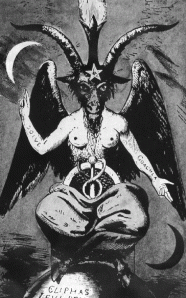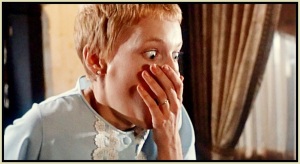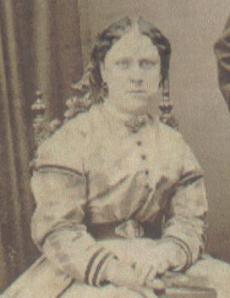Horror stories have always represented the fears of society, in exactly the same way as religious belief often mirrors the secular world. For example, superstitions changed during the outbreak of the Great Plague, when people began to blame the unexplained deaths on human sin and witchcraft (Malleus Maleficarum Part 1, Q XV)
Human beings have always had a bit of a negative obsession about the Other in society. Time and again we have scapegoated anyone who is different. Since ancient times, we’ve ridiculed and persecuted anyone who does not have the same beliefs as ourselves. The truth is, we are all very similar in all the ways that matter. We are all made up of the same stuff.
Hath not a Jew eyes? Hath not a Jew hands, organs,
dimensions, senses, affections, passions; fed with
the same food, hurt with the same weapons, subject
to the same diseases, heal’d by the same means,
warm’d and cool’d by the same winter and summer
as a Christian is? If you prick us, do we not bleed?
If you tickle us, do we not laugh? If you poison us,
do we not die? (The Merchant of Venice, Shakespeare)
We often give different names for the same things that we each call truth, but decry another for using unusual terminology to describe. It doesn’t take much scratching of the surface to reveal that we are often talking about the same thing. The ancient Greeks coined the phrase ‘magic’ from the Magi, the Persian priests, whose customs were too strange for the Greeks to understand were holy in nature.
I hear Peaches Geldof has joined a sex cult. Shock, horror! She is now a believer in Thelema, the religion founded by occultist Aleister Crowley, who practised sex magic, with apparent “secret sexual techniques for masturbation, heterosexual and homosexual sex” (Guardian, author anonymous). Well…there’s only so much you can do, but I’m guessing we have to take into account the time that Aleister Crowley was practising his esoteric knowledge. This would have been right, slap bang, in the middle of sexually repressed Victorian times. Thank goodness we’ve evolved our notions of sexuality and what constitutes “perverse”.
Aleister Crowley died in 1947, with a reputation as The Great Beast 666, a name he positively lapped up. In 1944, a few years before his death, Helen Duncan, a psychic, was prosecuted and imprisoned under the 1735 Witchcraft Act for revealing wartime secrets. Six months later, in September 1944, Jane York (72) was also prosecuted under the same Act and in December of that year Emily Johnson of Redhill Spiritualist Church was given a severe warning by police. They told her she would be prosecuted if she did not stop her “activities”. The Act actually strove to stamp out the belief in witchcraft amongst the educated in society, but it was possible to prosecute people for pretending to “exercise or use any kind of witchcraft, sorcery, enchantment, or conjuration, or undertake to tell fortunes”.

Click picture to view
The prosecutions sparked off the creative minds in America, and the following year John H Kafka came up with the story for The Woman Who Came Back (1945). The unfortunate heroine, Lorna, finds herself the scapegoat of the townspeople and is accused of witchcraft for everything that goes wrong. It doesn’t help matters that a coincidental meeting and accident has caused Lorna to suspect they could well be right. Thankfully by the end no one believes in witchcraft. Phew!
By 1951, the Witchcraft Act was repealed and replaced by the Fraudulent Mediums Act, and the previously “underground” Craft of Wicca began to flourish, led by Gerald Gardner. Of course, ignorance breeds fear and, as I have mentioned, fear breeds the practice of scapegoating. By the 1960s movies on the subject of the occult began to get filmed, particularly anything to do with covens and Satanic devil-worshippers. A second wave of witchhunts began, this time within horror movies. City of the Dead (1960) with Christopher Lee paved the way for the paranoia about anything to do with witchcraft. In 1968, two very popular films in the genre were screened: Dennis Wheatley’s The Devil Rides Out and Rosemary’s Baby. Five years later, in 1973 The Wicker Man was filmed. Many more followed, but these are the main ones that set witchcraft and paganism against Christian morality and ethics, at least in the minds of the Christian audience.

Click picture to view
The City of the Dead, starring Christopher Lee, is about a student who goes to a small town to find out information about witchcraft for her studies. Little does she realise that the townspeople are all evil devil-worshipping witches, who make lots of sacrifices, especially around about the time of Candlemas. Candlemas is a Christian festival for a start. It is the Feast of the Purification of the Virgin. However, in the pagan religion it is the festival of Imbolc, and marks the beginning of spring. It is associated with the virgin goddess, Brighid. We can clearly see here a distinct similarity between the purified virgin and the virgin goddess.

Click picture to read preview
Lucifer is also mentioned in this film, and has long been synonymous with the Devil and his many other names: Satan, Beelzebub etc. In Nods to the Old Gods I have explained briefly that Lucifer’s name means “light bearer”, and that it was the name given to the dawn appearance of the planet Venus, which heralds daylight. Early Luciferians – devotees of the god Lucifer – worshipped dragons and snakes, as well as the sun. In more advanced ancient civilisations, dragons and snakes were not perceived as evil. In fact, they were often associated with power and healing.

Click on picture to view “The Devil Rides Out”
The opening sequence to The Devil Rides Out is full of imagery usually associated with magic, Satanism and astrology. Set to the background music, which is horrific and scary, it seems we are to imagine all these images are too. The zodiac signs are used in this sequence, and then again at the end, on the sacrificial altar of the devil worshippers. Also, in the opening sequence we are introduced to Baphomet, who will later appear on the floor of the observatory and again at the orgiastic party. He is a goat-headed being, referred to as “The Goat of Mendes” by Christopher Lee. The reality is that most modern scholars now agree “Baphomet” is a corruption of “Muhammad”. Baphomet was the name of the idol the Knight’s Templars were accused of worshipping in the 14th century. It is thought that during their occupation of the Outremer, they had begun to incorporate Islamic ideas into their belief system. This, the Inquisition of course declared to be heretical.
In the 19th century, Baphomet became more associated with the occult (the name occult means “hidden”, as in “hidden knowledge”). In 1854, Eliphas Lévi published Dogmas and Rituals of High Magic in which he drew his image of Baphomet. This image is the best-known picture of Baphomet (see below).

Baphomet by Eliphas Lévi
Lévi considered his Baphomet to be a depiction of the absolute in symbolic form:
The goat on the frontispiece carries the sign of the pentagram on the forehead, with one point at the top, a symbol of light, his two hands forming the sign of occultism, the one pointing up to the white moon of Chesed, the other pointing down to the black one of Geburah. This sign expresses the perfect harmony of mercy with justice. His one arm is female, the other male like the ones of the androgyne of Khunrath, the attributes of which we had to unite with those of our goat because he is one and the same symbol. The flame of intelligence shining between his horns is the magic light of the universal balance, the image of the soul elevated above matter, as the flame, whilst being tied to matter, shines above it. The beast’s head expresses the horror of the sinner, whose materially acting, solely responsible part has to bear the punishment exclusively; because the soul is insensitive according to its nature and can only suffer when it materializes. The rod standing instead of genitals symbolizes eternal life, the body covered with scales the water, the semi-circle above it the atmosphere, the feathers following above the volatile. Humanity is represented by the two breasts and the androgyne arms of this sphinx of the occult sciences.
The appearance of Basphomet in The Devil Rides Out is referred to as The Goat of Mendes, a name which Lévi also used to describe Baphomet. Herodotus described the god of Mendes (in Egypt) as having a goat’s face and legs, and that male goats were held in high regard by the Mendesians. E A Wallis Budge writes:
At several places in the Delta, e.g. Hermopolis, Lycopolis, and Mendes, the god Pan and a goat were worshipped; Strabo, quoting (xvii. 1, 19) …The Mendisians, according to this last writer, paid reverence to all goats, and more to the males than to the females, and particularly to one he-goat, on the death of which public mourning is observed throughout the whole Mendesian district; they call both Pan and the goat Mendes, and both were worshipped as gods of generation and fecundity. Diodorus (i. 88) compares the cult of the goat of Mendes with that of Priapus, and groups the god with the Pans and the Satyrs. The goat referred to by all these writers is the famous Mendean Ram, or Ram of Mendes, the cult of which was, according to Manetho, established by Kakau, the king of the IInd dynasty.
Lévi’s Baphomet became an important figure within Aleister Crowley’s mystical system of Thelema. For Crowley, The Devil is the God of any people that one personally dislikes. Baphomet represents life, love, light and liberty.
There are a couple of interesting points about The Devil Rides Out, particularly the character of Duc de Richleau (Lee), who has knowledge of esoteric scriptures which he has taken the time to memorise. Like the bad guy, Mocata, Richleau also has the ability to use both hypnosis and magic, which he utilises to defeat the powers of darkness. Furthermore, as Mocata raises the angel of death, Richleau manages to raise the dead, bringing Tanith into the body of his niece and commanding her to do his will. He even manages to re-write history and turn back time with his magic. Although not explicit in the film, Richleau, to all intents and purposes, is a most powerful wizard who has the knowledge and ability to use the highest of magic.
Cleverly, and most importantly, however, is the fact that the makers of the film have also brainwashed the audience into believing exactly what they want them to believe with the imagery they use….

Click photo to watch “Rosemary’s Baby”
The same year, Rosemary’s Baby also hit cinemas. The heroine, Rosemary (Mia Farrow), becomes pregnant after having a weird lucid dream in which she imagines herself to copulate with the Devil. Controlled by her doctor and eccentric neighbour, Minnie, Rosemary becomes more and more isolated from all her friends. The climax, as Roman tells her, is that Satan is her son’s father.
In Nods to the Old Gods, I explain that Ha-Satan is usually translated as “adversary” (i.e. of God). In Arabic the term Shaitan means “astray” or “distant”. In the Quran, after Iblis refuses to bow to Adam with the rest of the angels, he becomes known as Shaitan, meaning “enemy”, “evil”, “rebel”, “devil”. In the Baha’i faith, however, Satan is not regarded as an independent evil power, but signifies the lower nature of human beings i.e. the evil ego within us. In conjunction with what we know of his relationship to Pan (the goat-headed fertility god of the ancient Greeks), it would seem that Satan also represents inner sexual instincts. In Rosemary’s Baby he is the sexual force used to impregnate her with the child of the Devil. The ultimate challenge for Rosemary is whether or not her maternal instinct will be powerful enough to overcome the revulsion she feels towards a child whose father is Satan.

Click photo to view “The Wicker Man”
In 1973, The Wicker Man gave an impression of pagan religions which has been hard to get rid of. Edward Woodward plays a cop who goes off to Summer Isle to investigate the disappearance of a little girl, Rowan Morrison. What he encounters are the uncooperative inhabitants of the island who seem intent on thwarting the policeman’s investigation.
He stays at the Green Man’s Inn, where he meets more of the weird townsfolk who proceed to sing a rather raunchy song to the landlord’s daughter, Willow (Britt Ekland), which perturbs the prudish Christian Sergeant Howie. He is further angered and unsettled by seeing couples having sex in a field outside, and a naked woman crying over the grave of her (presumably) dead husband.
The naked Willow sings a Siren’s song to try to entice the sexually suppressed and sweating virgin, Howie. However, he is engaged to another and believes sex before marriage to be wrong. He manages to withstand her charms, but more sex and frivolity are to follow. The following day is May Day Eve, and begins with boys dancing round a Maypole. He overhears the local school teacher explaining that the Maypole symbolises the penis, “venerated in religions such as ours as the generative force in nature” to which Howie makes it clear he is absolutely disgusted. Howie interprets the beliefs and teachings as “degeneracy, indecency, corruption and filth”. On discovering Rowan’s name in the school register, the teacher is forced to explain to Howie that when a person dies the belief of the Summer Isle inhabitants is that they return to nature: to air, to fire, to trees, to water, to animals. She explains that the children find it easier to understand reincarnations rather than resurrection.
Further investigations lead Howie to the residence of Lord Summerisle. On the way, he witnesses a strange ritual with naked women dancing round the fire within a circle of standing stones. Howie argues that the people of the island are practising false religion and false biology by believing in reproduction without intercourse. Lord Summerisle responds that Jesus himself was born of a virgin and a ghost. One belief is no less ridiculous than the other.
As Howie gets more and more angry, Lord Summerisle and the other residents seem to become more and more pleasant and happy. Throughout the film we hear about the sun god, the goddess of the field, the idea of sacrifice in order to gain a good harvest, John Barleycorn (the life of the fields) and the salmon of knowledge. The climax is a virgin sacrifice burned within the confines of a giant wicker man.
Is this what we pagans get up to? Well, no, not quite. Neo-paganism is based on the Old Religions and the practices depicted in the film are either twisted versions of the truth or complete nonsense in the modern age. It is true that the May Pole is a phallic symbol. In many ancient cultures, such as Rome, the penis was venerated as a potent fertility symbol and it wouldn’t have been unusual to see phallic symbols above doors, for example. It is only in modern times that our Christianised culture has forbidden us to worship such things.

The May Pole
Beltaine is an important date in the pagan calendar. It is on 30th April, the eve before May Day until May Day Night, and it is associated with sex and fertility. It is between the Spring Equinox (21st March) and the Summer Solstice (21st June), and it marks the beginning of summer. It was originally a Gaelic festival when symbolic fire rituals were performed to protect the cattle and people, and to encourage crops to grow. Flowers were displayed, and young girls washed their face in the May Day dew. A custom which sometimes still carries on to this day! I remember doing this when I was a young girl.
Nowadays, we generally don’t have much opportunity or requirement for driving cattle between two bonfires for cleansing and protection. We might wish for crops or plants to grow, though, and some pagan rituals might request that the Goddess of the Grain makes our land fertile. Pagans are very individual. Some might take a walk in nature, enjoying the changing seasons and lighting a candle, perhaps saying a prayer, performing a small ritual to mark the occasion or take a trip to Edinburgh to watch the Beltane Fire Festival. Some pagans choose Beltaine to marry, or consummate a relationship, because of its association with love and fertility. A few do carry out rituals naked or ‘skyclad’, but not all. In fact, not many. Most rituals are done robed. However, skyclad rituals are not frowned upon. The pagan ethic tends to be “each to their own”.

Beltane Fire Festival, Edinburgh
We don’t all believe in reincarnation, although some do. Paganism is so varied and there is no dogma to insist that you believe one thing over another. In fact, you can be pagan and a monotheist (one god), polytheist (many gods) or atheist (no god(s)). Paganism allows you to revere nature, and be of a scientific disposition at the same time, but for those who wish to believe in a god they can. This might seem strange, but we once did all live in harmony, with communities deciding which gods they would worship. Just because someone worshipped one god, did not necessarily mean they did not believe in the existence of the other gods. It seems to me that this system makes for a more harmonious existence amongst the cultures of the world. If we could all accept that we each have our own very different perspective of the world, we might at last live in harmony. Live and let live, as the saying goes!
As for the Wicker Man, there is only one account which alleges it was used by the Druids for human sacrifice. This was written by Julius Caesar in his Commentary on the Gallic War. The Druids may have used ritual sacrifice as a means of executing criminals, but whether they used a giant wicker man to do so is highly debateable. Nowadays, no humans are ever sacrificed, and animal sacrifice is frowned upon by the majority of pagan and magical communities and practitioners. Furthermore, most pagans do not believe in the Christian devil, as he is a later invention and stems from many of the early pagan gods who were misunderstood and, therefore, demonised as time went on. However, there are some people who practise both Christian and pagan religion, celebrating both Christian and pagan feast days. This is probably very similar to how it would have been in the early Celtic Christian world, when we learned to live side by side and more in harmony with each other. What went wrong?
If you think scapegoating doesn’t happen nowadays, you are very wrong. Children are named as witches, ostracised and attacked in parts of Africa, blamed for bringing bad luck to their villages. Just as alarming, is the fact that we don’t have to look much further than our own backyard to find that in British society the sick, disabled and immigrants are having the finger of blame pointed in their direction for all the ills of our desperate economic situation. Like in horror films depicting ancient gods as demonic, the public are often not aware of the level of brainwashing they are receiving, whilst innocent people suffer and die. Suicides have risen in the UK, as the poor find themselves more and more in debt, whilst the tax-avoiding rich are become richer. If you don’t see something very wrong with that, then you have indeed been brainwashed; and you are taking part in the age old practise of scapegoating.
Until next week, I hope we all see the light.
Your friend, A.D.
REFERENCES
http://www.guardian.co.uk/culture/shortcuts/2013/apr/15/peaches-geldof-aleister-crowley-sex-cult-oto
http://www.guardian.co.uk/commentisfree/2007/jan/24/comment.comment3 by Vanessa Chambers 24/1/2007
http://en.wikipedia.org/wiki/History_of_Wicca
http://altreligion.about.com/od/symbols/a/baphomet.htm
http://en.wikipedia.org/wiki/Baphomet
http://www.sacred-texts.com/pag/mm/mm01_15a.htm
VIDEOS
http://viooz.co/movies/1721-rosemarys-baby-1968.html
https://www.youtube.com/watch?v=PJXl_gckMiU&wide=1
http://nobuffer.info/pl.php?url=19EE7B1849C4169D
https://www.youtube.com/watch?v=1kw9H6jDrVE
http://viooz.co/movies/1683-the-wicker-man-1973.html
OTHER FILMS
http://www.imdb.com/list/zti3t-aeJME/
 Christopher Lee became famous for his involvement with Hammer Horror films, his most memorable and iconic role being Dracula. He played the part a total of 10 times: Dracula aka Horror of Dracula (1958); Dracula: Prince of Darkness (1966); Dracula has Risen from the Grave (1968); Count Dracula (1970); Taste the Blood of Dracula (1970); One More Time (1970); Scars of Dracula (1970); Dracula Today aka Dracula A.D. 1972 (1972) ; The Satanic Rites of Dracula 1973); Dracula Pere et fils (1976).
Christopher Lee became famous for his involvement with Hammer Horror films, his most memorable and iconic role being Dracula. He played the part a total of 10 times: Dracula aka Horror of Dracula (1958); Dracula: Prince of Darkness (1966); Dracula has Risen from the Grave (1968); Count Dracula (1970); Taste the Blood of Dracula (1970); One More Time (1970); Scars of Dracula (1970); Dracula Today aka Dracula A.D. 1972 (1972) ; The Satanic Rites of Dracula 1973); Dracula Pere et fils (1976). The Hobbit: The Battle of the Five Armies (2014).
The Hobbit: The Battle of the Five Armies (2014).














































You must be logged in to post a comment.